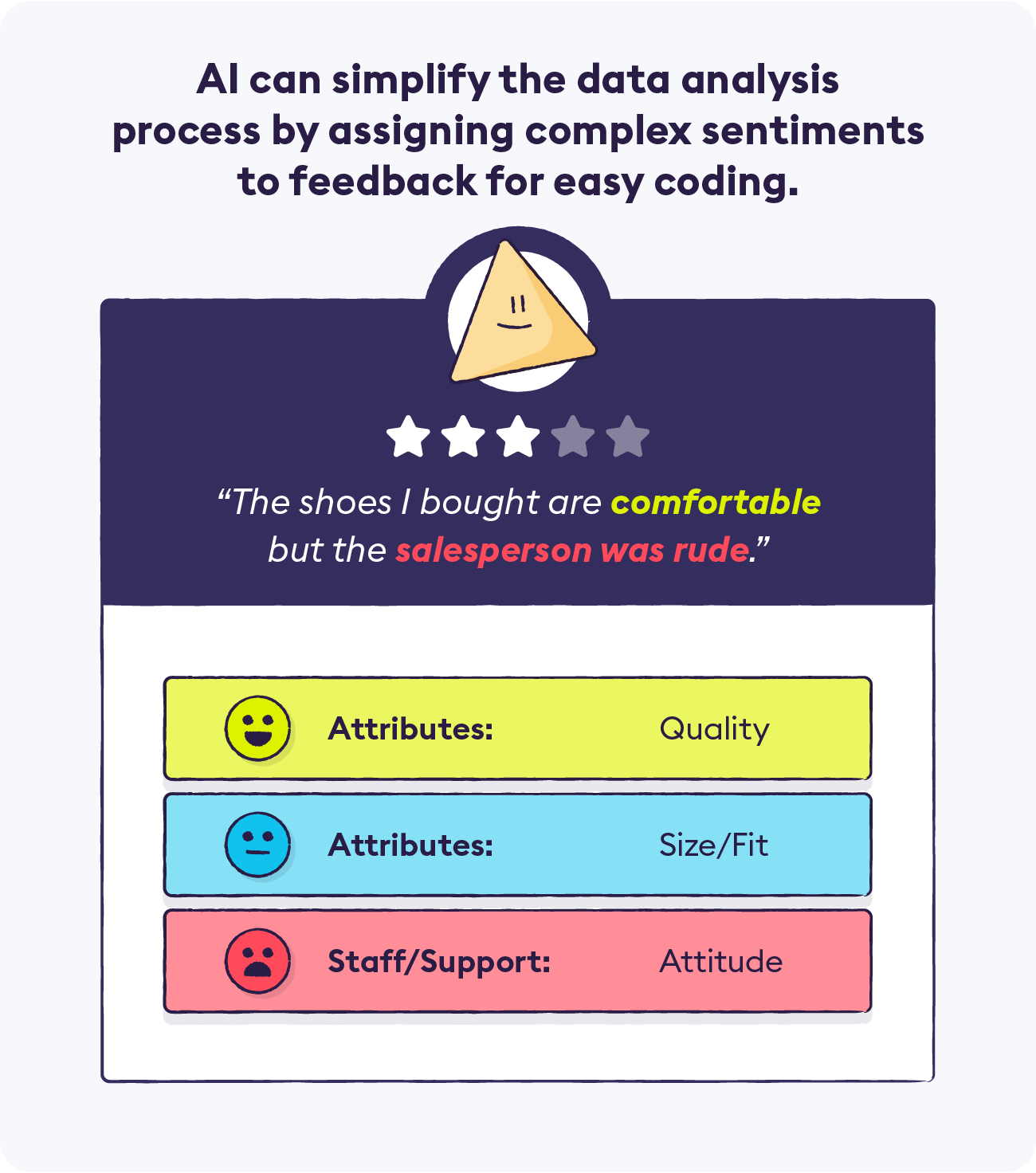How to Use Sentiment Analysis to Drive Your Digital Marketing Efforts
Wouldn’t it be great to quickly and easily decipher and create quantifiable data from your customers’ opinions and feedback? Well, there’s technology out there today that allows you to do just that. It’s called sentiment analysis.
Quick Links
Sentiment analysis allows companies to classify written text. For instance, if a person leaves a Google review, comments on a social media post, or completes an emailed survey that feedback can be analyzed and given a score of positive, negative, or neutral. This feedback provides valuable insight for a company. Businesses can better understand the voice of the customer and how customers generally perceive them and if certain interactions are affecting customer sentiment and therefore customer satisfaction.
The below guide will further define sentiment analysis and will discuss how it can be used in digital marketing tactics, particularly customer experience (CX).
Sentiment Analysis Defined
Sentiment analysis is a computational language processing technique and software that analyzes text and looks at key phrases to identify the customer’s overall sentiment as positive, negative, or neutral.
For example, if a company’s software product is one year old and has upwards of 1,000 reviews, sentiment analysis can be used to discover how customers feel about that product. What common issues do clients often have or are there aspects of the software that they enjoy.
Perhaps “pricing” keeps getting flagged as a negative sentiment while “interface” gets a positive score. Regardless of the feedback received, being able to quickly gather, identify, and understand common feedback trends allows companies to take immediate action to fix customer pain points or bottlenecks. After fixing these issues, they can be publicized via digital marketing efforts.
4 Sentiment Analysis Types
There are four types of sentiment analyses. Sentiment analysis can focus on polarity (positive, negative, neutral) or emotions (irritation, happiness, relief), or intention (interest level, purchase, or pass).
Fine-Grained Sentiment Analysis
Fine-grained sentiment analysis is what we’ve been referring to most often. It looks at consumers’ polarity and simply measures a neutral, positive, or negative sentiment. If you need more granular feedback, consider expanding the Likert scale to great, good, neutral, bad, very bad.
Emotion Detection
Emotion detection sentiment analysis is a more advanced form of text analytics. Emotion detection detects emotions such as frustration, anger, irritation, remorse, happiness, etc. To do this, the sentiment analysis uses a lexicon (list of words and their corresponding emotions) along with complex machine learning algorithms. For example, “I was pretty irritated with the customer service team. I had to be transferred to multiple people.”
Aspect-Based Sentiment Analysis
Aspect-based sentiment analysis is most often used when analyzing product reviews. It’s used to learn more about a specific aspect or feature of a product. For instance, an aspect-based classifier could determine that this text, “the load time on the software was quite slow” denotes a negative and frustrated opinion about the load time.
Intent Analysis
Intent analysis looks to identify the overall objective or goals of the client. For instance, a text analytics tool created for intent analysis can help determine if the message is a query, complaint, suggestion, or simply gratitude or appreciation.
Intent analysis is quite useful for businesses looking to increase their marketing and advertising skills. For instance, if multiple customers comment on social media or in online forums that they can’t wait to purchase a new update but are waiting for a sale, then the company’s marketing and advertising teams can create campaigns around an upcoming holiday sale.
In summary, sentiment analysis is a powerful tool that gives businesses key insight into how their customers think and feel about a product, service, or the brand in general. The results from text and sentiment analysis will directly affect digital marketing strategies, tactics, and campaigns.
What Is WooCommerce Product Slider and Why Your Store Needs It
Why Do Product Images Matter So Much in Online Stores? When someone visits an online store the…
0 Comments9 Minutes
How to Streamline Your Customers’ Shopping Experience?
The goal for any online store is to make shopping as smooth as possible. When visitors move…
0 Comments8 Minutes
Strengthening Brand-Customer Relationships Through Gamified Loyalty Programs
Creating lasting connections with customers has become increasingly vital as the marketplace grows…
0 Comments6 Minutes
How to Use SEO and SEA Together in Search Engine Marketing
In digital marketing, search engine marketing (SEM) plays a critical role in improving online…
0 Comments10 Minutes
Content Marketing Growth Hacks: Real Shortcuts to Drive Traffic
Are you still lagging in content marketing? Sticking to these old strategies seems…
0 Comments10 Minutes
How to Build a Strong Local Following Using Social Media Marketing
In the days of likes, shares, and stories, local businesses have a golden opportunity to create…
0 Comments9 Minutes
Why WooCommerce is the Best Choice for Your Online Store?
WooCommerce stands out as a top option for anyone looking to build an online store. This platform…
0 Comments8 Minutes
How to Use AI-Powered SEO Tools for WordPress eCommerce
SEO is a critical factor in the success of any e-commerce WordPress store. As competition…
0 Comments11 Minutes








